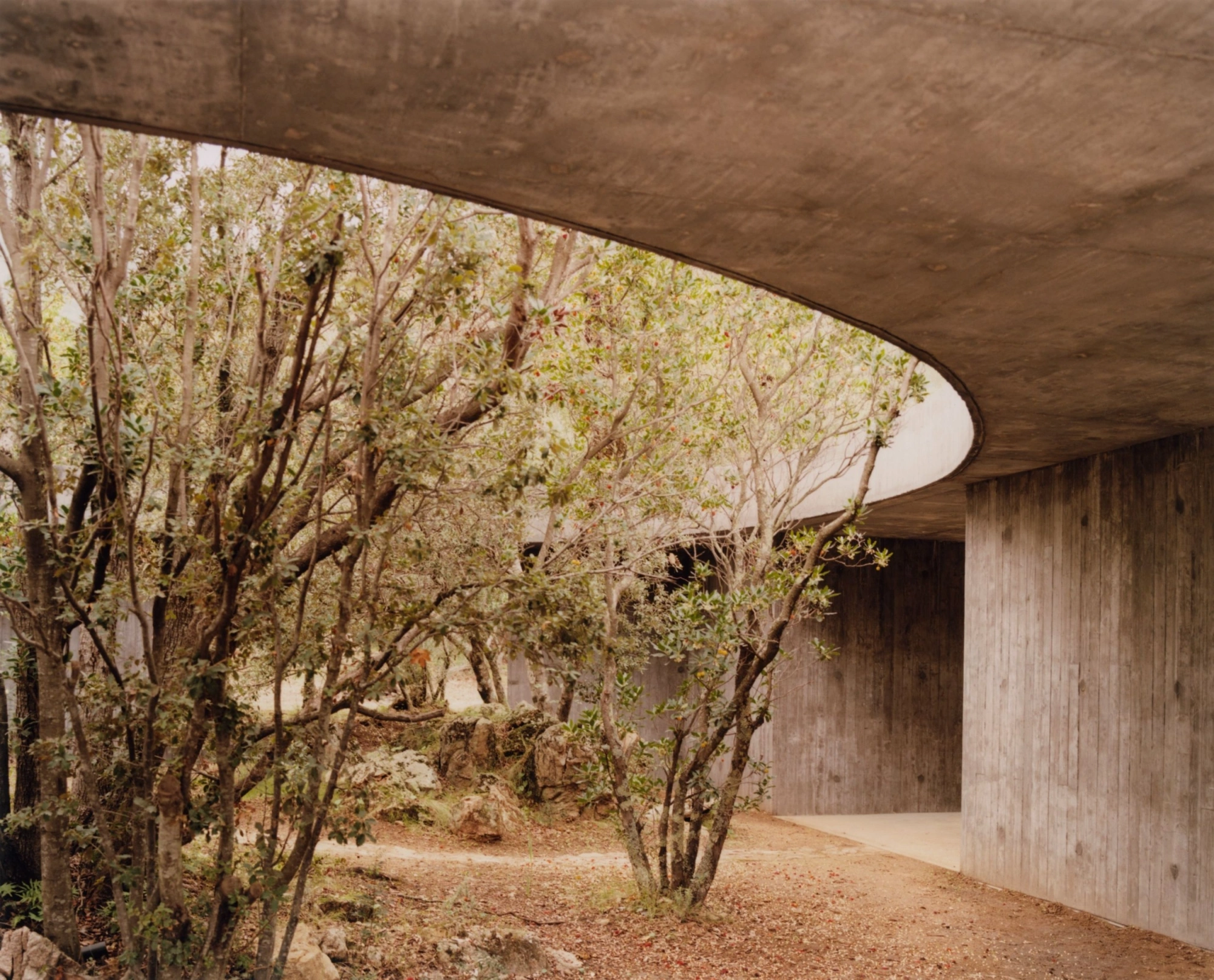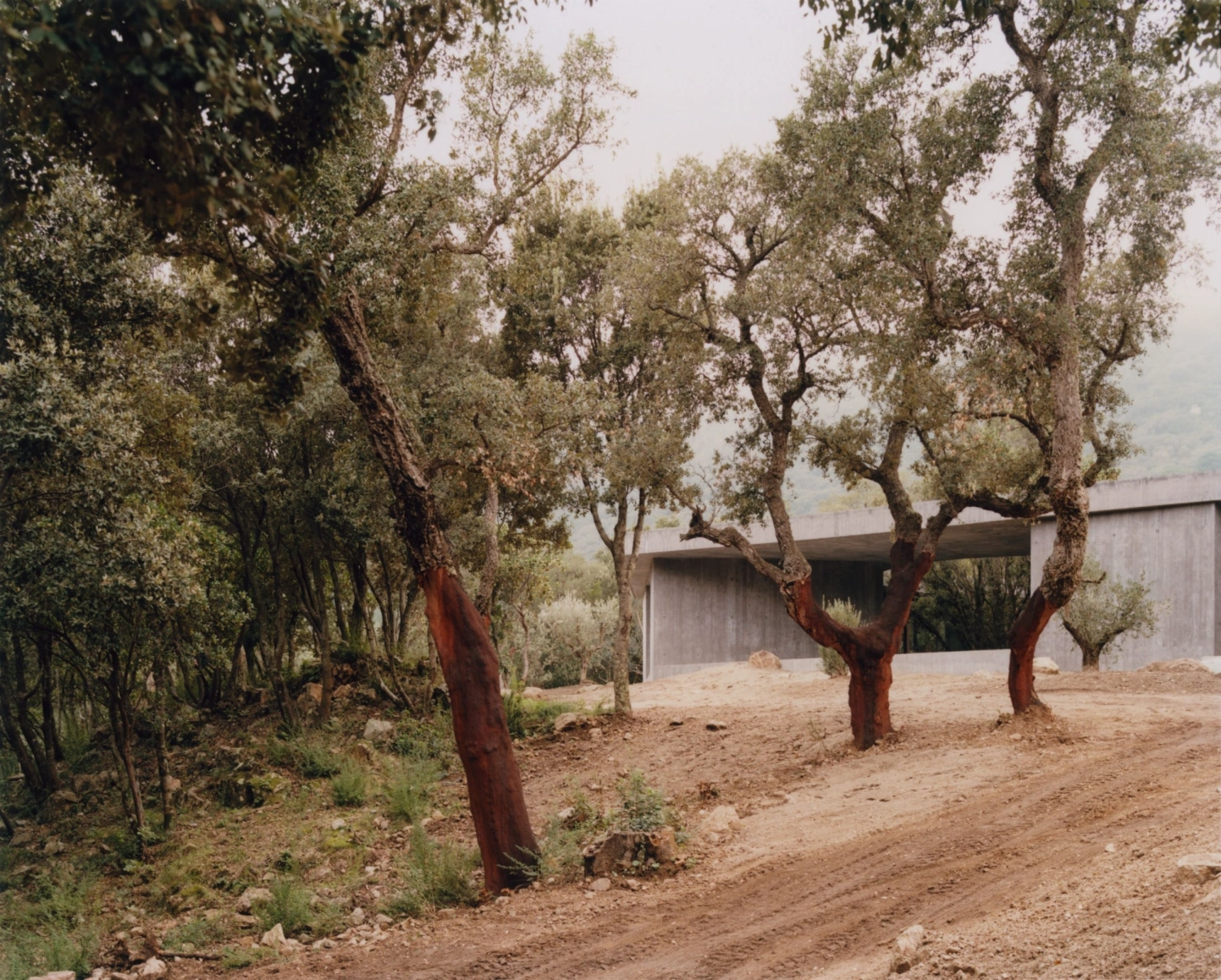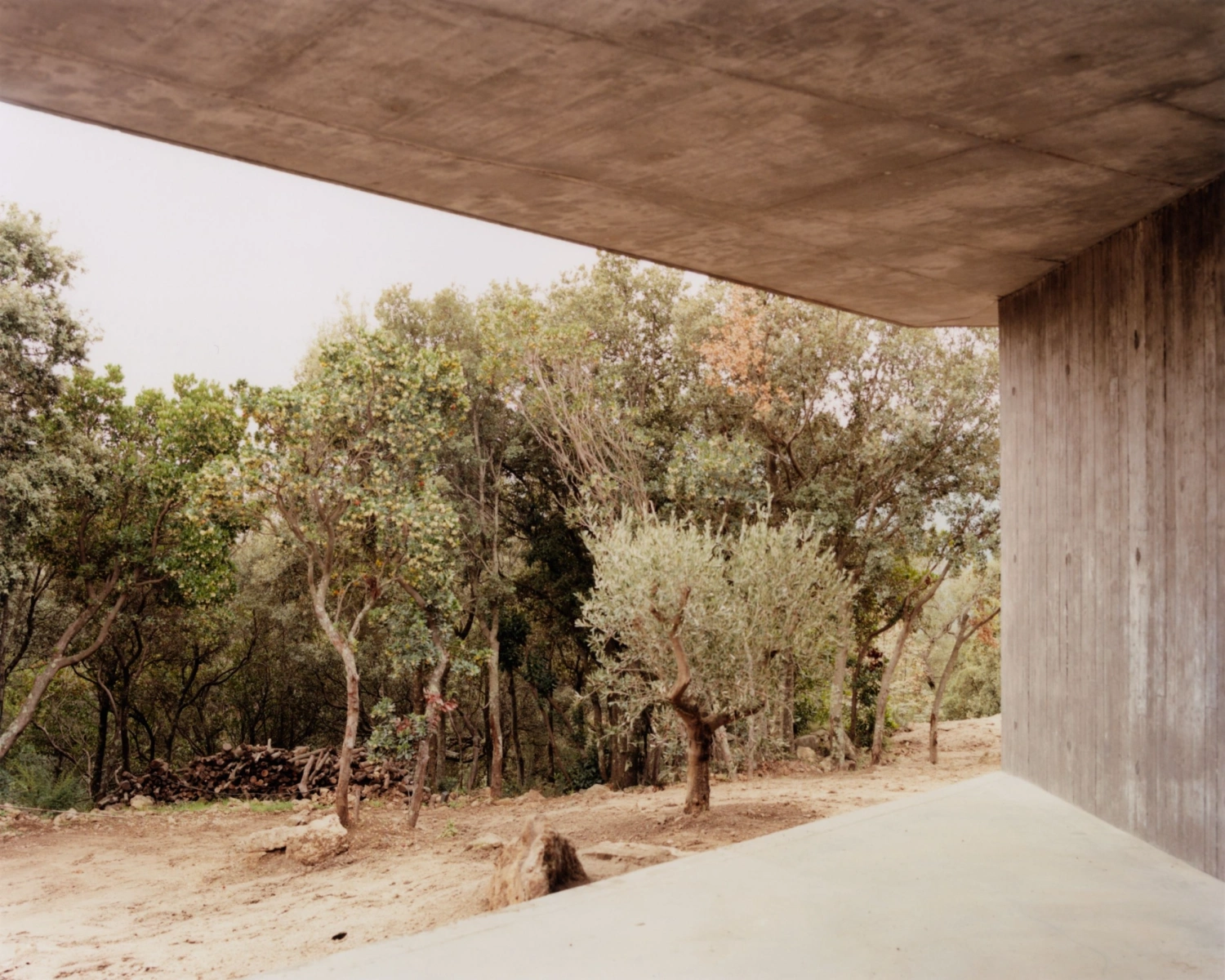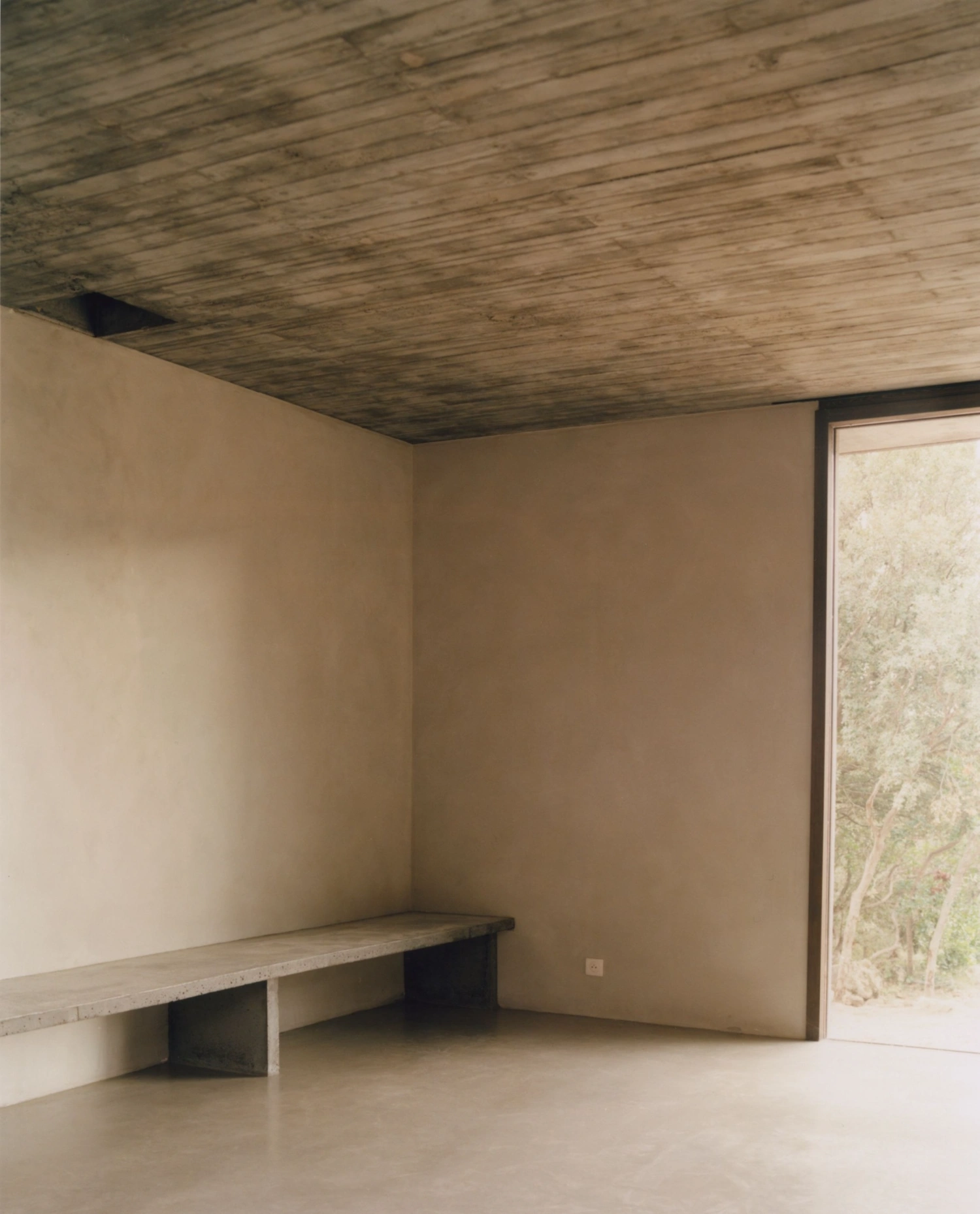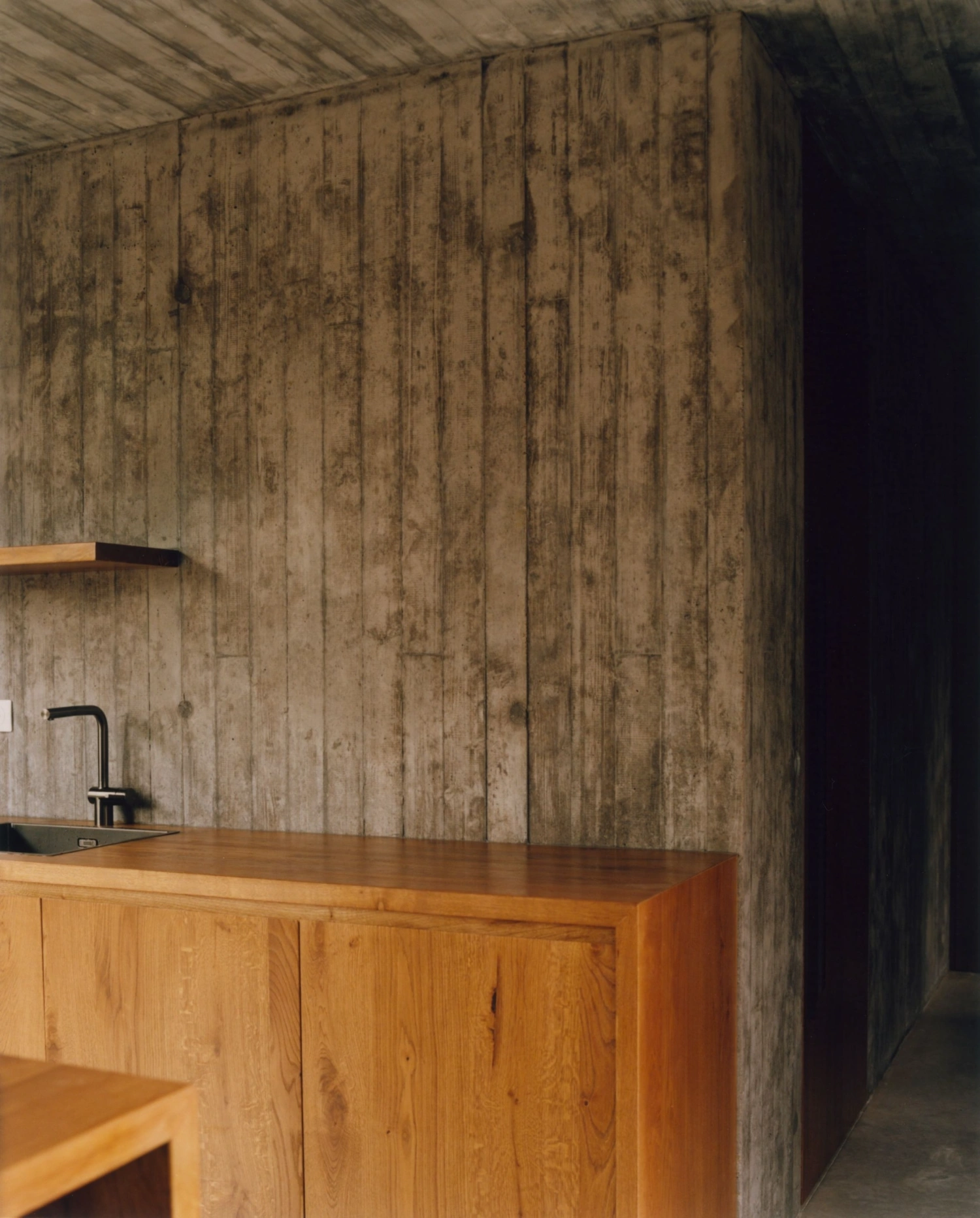Hidden within a thicket of arbutus and cork oaks in southern France, House D by Orma Architettura redefines what it means to dwell in nature.
Rather than imposing itself on the landscape, the project seems to breathe with it — a composition of concrete and air, of presence and void, whose contours are literally shaped by the trees it sought to preserve. The architects approached the site not as a canvas to be cleared but as a dense and living condition that demanded respect and precision.
The house’s form emerges from this negotiation. Its plan is drawn around the existing vegetation, each façade bending subtly to accommodate trunks and root systems. At the center lies an oval patio, a clearing within the clearing, where the forest reclaims its space. This open void, hosting a cluster of trees, anchors the project both spatially and symbolically — an inward garden that blurs the distinction between architecture and nature. From every room, the eye is drawn not outward toward the horizon but inward, toward this fragment of living landscape framed by concrete.
The choice of material is deliberate and restrained. Concrete, with its raw tactility, echoes the mineral ground beneath and the bark-like textures of the surrounding forest. It’s not a gesture of domination but one of alignment: the concrete volumes rest lightly above the soil, a horizontal plane hovering just above the terrain. This subtle elevation reinforces a sense of permeability — air, light, and shadow circulate freely, softening the boundaries between inside and outside.
Large openings cut into the volumes allow for expansive views without hierarchy. The walls dissolve into the undergrowth, and in certain parts of the patio, the ceiling disappears entirely, surrendering to the sky. Inside, the material palette continues the dialogue — pale woods wrap the interiors, their grain recalling the forest canopy outside. The result is a domestic atmosphere that feels both protective and open, like inhabiting the hollow of a tree.
House D strength lies in its restraint, in the precision with which it listens to the site. It belongs to a lineage of architecture that seeks not to idealize nature but to coexist with it — a quiet and enduring rightness. In Conca’s woodland, Orma Architettura has achieved something rare: a home that neither hides nor asserts itself, but simply belongs.

